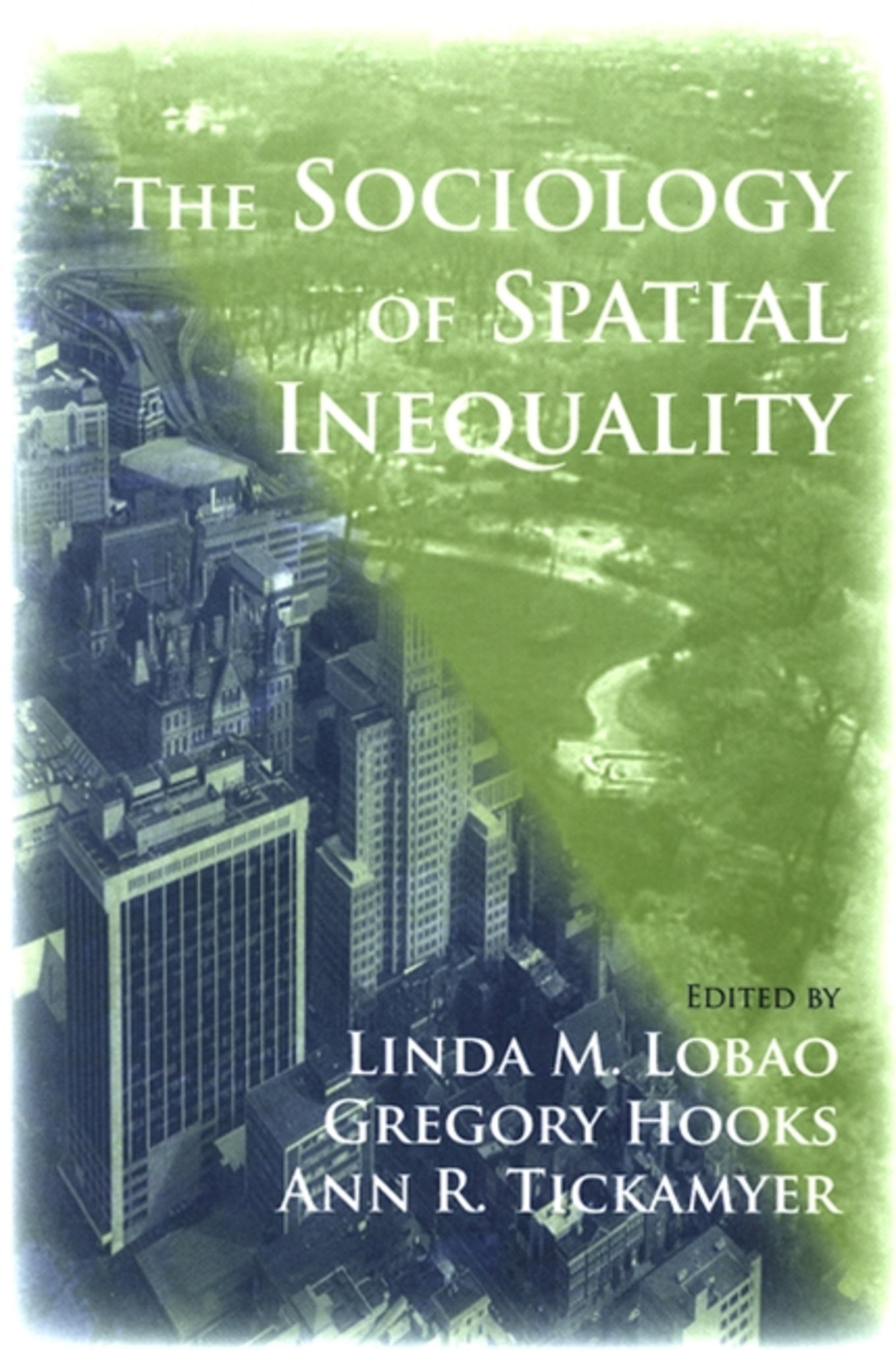We're sorry. An error has occurred
Please cancel or retry.
The Sociology of Spatial Inequality

Some error occured while loading the Quick View. Please close the Quick View and try reloading the page.
Couldn't load pickup availability
- Format:
-
10 May 2007

A sociological look at the role of space in inequality.
2007 CHOICE Outstanding Academic Title
Sociologists have too often discounted the role of space in inequality. This book showcases a recent generation of inquiry that attends to poverty, prosperity, and power across a range of territories and their populations within the United States, addressing spatial inequality as a thematically distinct body of work that spans sociological research traditions. The contributors' various perspectives offer an agenda for future action to bridge sociology's diverse and often narrowly focused spatial and inequality traditions.


"…makes an important contribution to inequality studies. It is an invitation to further explore the innovative force of a relational theory of space for sociology." — American Journal of Sociology
"This collection of first-rate scholarship has the potential to become a classic reference title." — CHOICE
"The editors provide the first overview of the state of spatially oriented research on inequality in sociology, which is much larger and encompassing than many people realize, spanning demography, human ecology, urban and community sociology, comparative sociology, as well as stratification." — Leslie McCall, author of Complex Inequality: Gender, Class, and Race in the New Economy
"This book is a first of its kind. It brings the scattered literatures together, imposes some badly needed conceptual structure, and provides a variety of applications of spatial inequality research. One need look no further than the introductory chapter to sense the capacity of the writers to synthesize seemingly disparate literatures." — Charles M. Tolbert II, coauthor of Work in the Fast Lane: Flexibility, Divisions of Labor, and Inequality in High-Tech Industries
Acknowledgments
1. Introduction: Advancing the Sociology of Spatial Inequality
Linda M. Lobao, Gregory Hooks, and Ann R. Tickamyer
PART I EXTENDING THE SOCIOLOGICAL IMAGINATION ACROSS SPACE: CONCEPTUAL AND METHODOLOGICAL ISSUES
2. Advancing the Sociology of Spatial Inequality: Spaces, Places, and the Subnational Scale
Linda M. Lobao and Gregory Hooks
3. New and Unexplored Opportunities: Developing a Spatial Perspective for Political Sociology
Kevin T. Leicht and J. Craig Jenkins
4. Territories of Inequality: An Essay on the Measurement and Analysis of Inequality in Grounded Place Settings
Michael D. Irwin
PART II STUDIES OF SPATIAL INEQUALITY
5. The Spatial Politics of Public Policy: Devolution, Development, and Welfare Reform
Ann R. Tickamyer, Julie Anne White, Barry L. Tadlock, and Debra A. Henderson
6. Differential Mortality across the United States: The Influence of Place-Based Inequality
Diane K. McLaughlin, C. Shannon Stokes, P. Johnelle Smith, and Atsuko Nonoyama
7. Placing Family Poverty in Area Contexts: The Use of Multilevel Models in Spatial Research
David A. Cotter, Joan M. Hermsen, and Reeve Vanneman
8. Adios Aztlan: Mexican American Out-Migration from the Southwest
Rogelio Saenz, Cynthia M. Cready, and Maria Cristina Morales
9. A Spatial Analysis of the Urban Landscape: What Accounts for Differences across Neighborhoods?
Deirdre A. Oakley and John R. Logan
PART III THE SOCIOLOGY OF SPATIAL INEQUALITY: TOWARD A COMMON VISION
10.Space for Social Inequality Researchers: A View from Geography
Vincent J. Del Casino Jr. and John Paul Jones III
11. Conclusion: Agenda for Moving a Spatial Sociology Forward
Gregory Hooks, Linda M. Lobao, and Ann R. Tickamyer
About the Editors and Contributors
Index



